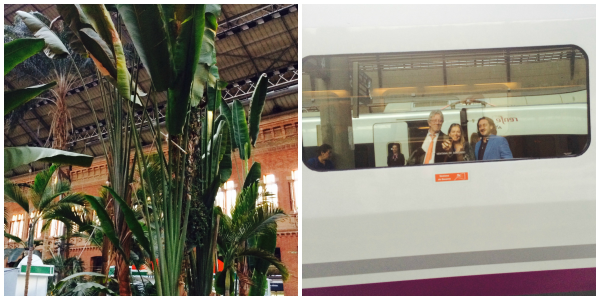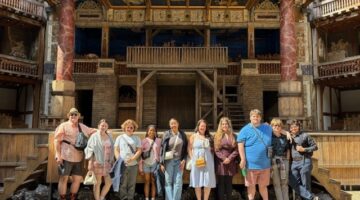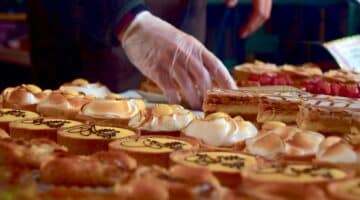Churros, Churches and the Best of Spain in Spring
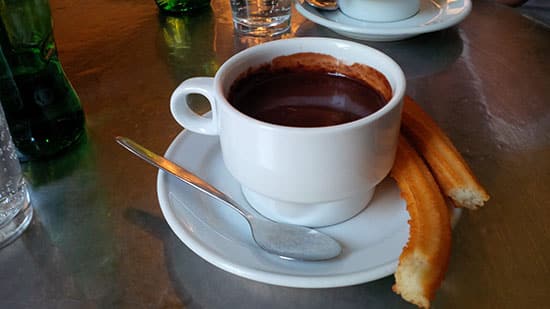
It wasn’t that I had had enough of Madrid. I had spent my first night doing a tapas route while bumping into a bunch of teachers that I knew.
As is the way, I ended up at the Chocolateria San Ginés, a café on Pasadizo de San Ginés in Central Madrid and close to the Puerta del Sol. This is the stuff that dreams are made of. All of that work in the gym, the yogurt for breakfast, and the carrot smoothies with kale for your midday fare are undone in a matter of moments!
The churros, essentially just deep fried batter, sort of like a donut but linear in shape, are always served piping hot. You just have to dip them into your own personal mini vat of hot, thick, chocolate. This place is open 24 hours per day so if you have one of those cravings, no worries, just pop on over. They are always there for you.
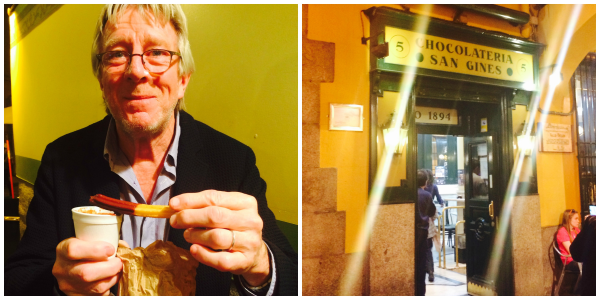
After the various savory tapas that preceded this extravagance, you can safely say that there was no longing for something extra at the end of the evening. Happily I went on my way through Madrid’s ever busy streets late at night while imagining how many miles I would have to run in order to pull back the decadent gains made at San Ginés. Tomorrow I had decided to get out of town and head to Seville. Churros can do that for you.
The Sights and Sounds of Andalucía
Not to flog a dead horse, but the sheer delight of travelling by train in Europe never grows old. I jumped into a taxi and headed to the Atocha train station to catch the AVE to Seville. Atocha is quite a delight. Nestled between the museums in a busy intersection, it has a lush tropical garden with hundreds of tiny turtles paddling about their day.
The AVE takes around two hours and fifteen minutes and stops at the beautiful city of Cordoba en route. Cordoba is famous for its Mezquita; the mosque within a church.
On the way down to Andalucía, there are orchards upon orchards of oak trees. These are not the oak trees of northern Europe, but rather Spanish oak trees which are smaller and provide the fruit of the acorn that is fed to the pigs that gives us the veritable jamon pata negra.
There are also no shortage of almond and olive trees that populate the landscape as the train speeds towards its destination.

My final destination was Seville. Here in the Santa Cruz area you feel the power of Andalucía which to my mind is one of the most important regions in Spain. Spanish traditions are bred here. Flamenco was born here. The colors of Andalucía, the ornate tiles, the whitewashed villages, the evidence of a once great and powerful Islamic influence, all hang in the air as does the scent of jasmine and orange blossoms that float around the Alcazar.
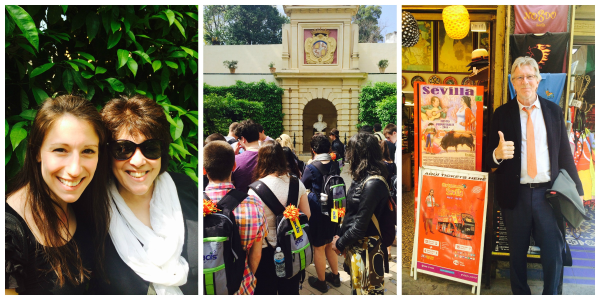
We had arrived during the Semana Santa, the Holy Week. The city had this electric atmosphere as various neighborhoods participated in their own homage to Christ through the processions that took place every day, almost every hour, and throughout the night. This truly provided a colorful and yet bizarre backdrop to this already colorful city. The procession of pasos, floats of lifelike wooden sculptures of individual scenes of the Passion, or images of the Virgin Mary showing grief for her son, are masterpieces of art and sculpture. The penitential robes and hoods and the brass bands all add to this spectacle.
It is like something that you have never seen before.
On this beautiful spring day the crowds surrounding the procession were particularly vibrant. Even the taxi driver had the processions on the radio as if he was listening to a soccer game.

We drifted over to the river (avoided more churros) and headed to a restaurant that was tucked behind the Macarena Hotel.
Tomorrow morning I would return to Madrid wishing that I could have stayed here longer.

